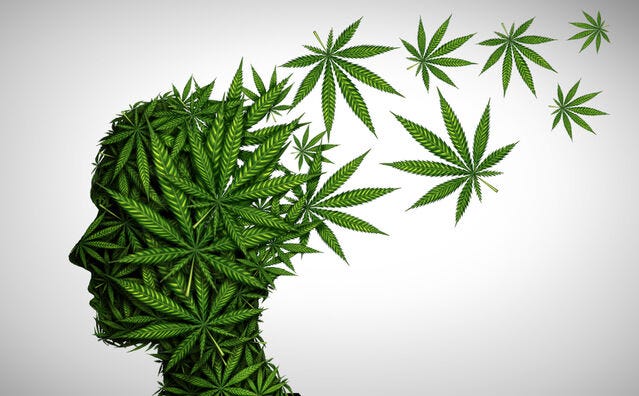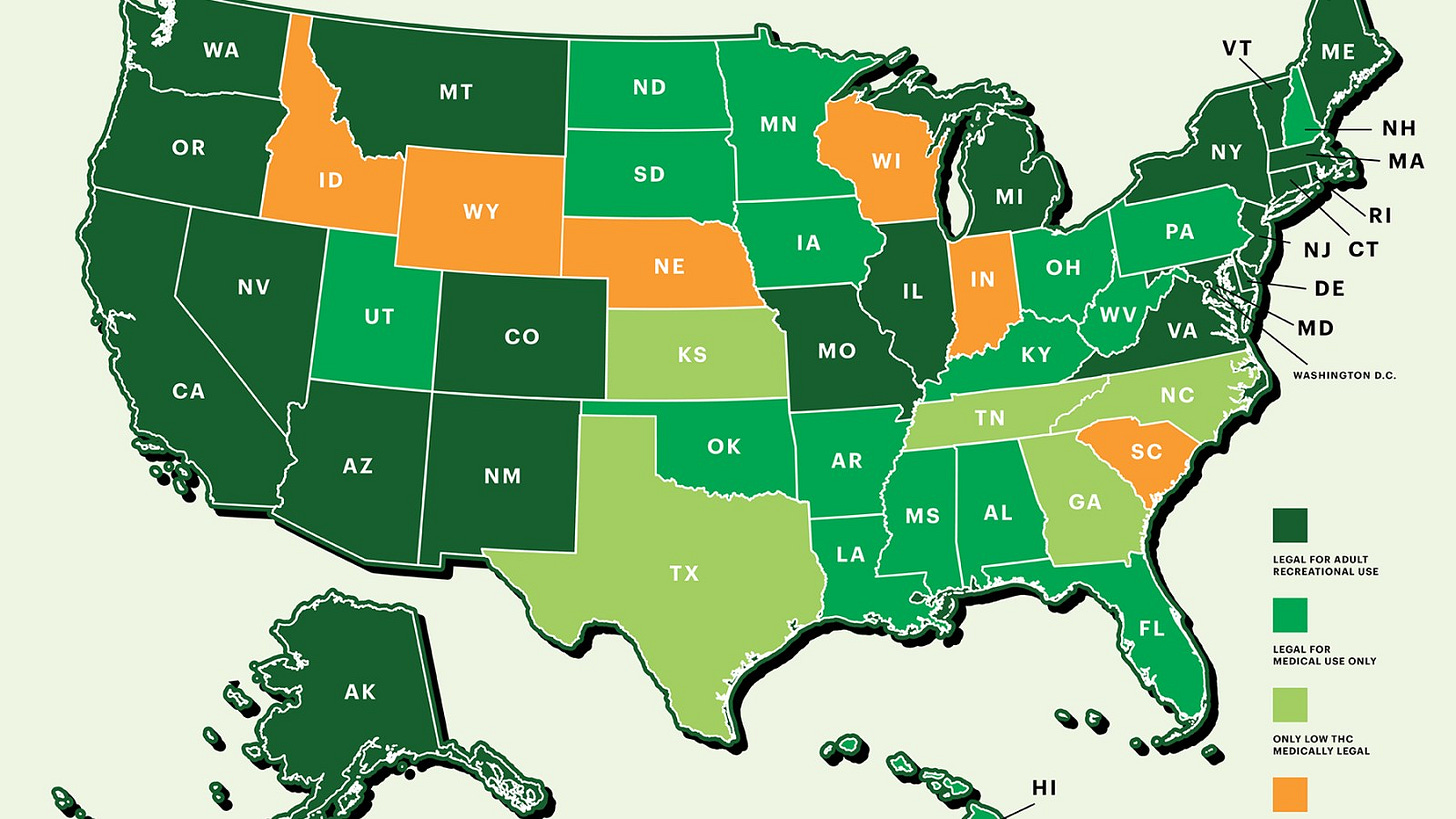FAQ Episode 25: Using Cannabis for Acute and Chronic Migraine Relief
FAQs for Natural Migraine Relief
Hi! Jeff Baker here again, as the physician host for Frequently Asked Questions about Natural Migraine Relief for Women. Today I’m going to answer another question from one of my Natural Migraine Relief course members who asks “I’d like to know more about the use of cannabis (CBD or medical marijuana) as therapy for migraine. I tried it once and it calmed both my anxiety and my migraine pain. What is the science about why it might be helpful?”
I have seen the clinical benefit of cannabis products in chronic pain, inflammation and nausea, and also for migraine, a case where all three of these can be a factor. Let’s start by considering how cannabis derivatives may prospectively reduce or actively treat migraine pain. CBD and THC from the cannabis plant interact with the endocannabinoid system in the human body. They may have other mechanisms of action and beneficial pathways that we don’t yet fully understand. As we discuss some of the known pathways, I’ll be using the term “CBD” to stand in for both CBD and THC.
Cannabis and neurochemical pathways
The perception of and alleviation of pain is a complex interaction of multiple chemical messengers and receptors. The prime action of cannabis is the modulation of the endocannabinoid CB1 and CB2 receptors to reduce both pain perception and inflammatory pathways.
In addition to the endocannabinoid system, CBD can also bind and downregulate several classes of pain reception receptors, enhance natural pain relievers and also influence the levels of brain calming neurotransmitters like GABA and serotonin.
Cannabis also has some anti-epileptic effects, which suggest that there may be other brain calming pathways we have not fully identified yet.
Defining your options for cannabis therapy:
There are over 100 cannabinoids in the marijuana plant, and when it is smoked, you can inhale some 400+ types of chemical compounds. This is why the specific CBD and THC derivatives have been purified for medicinal use. On the other hand, the effects of inhaled cannabis begin after just a few minutes, which can make this a preferable route for the immediate treatment of migraine pain and associated acute nausea.
CBD (cannabidiol) is legal to obtain almost anywhere. And unlike THC, CBD does not produce a psychoactive "high”. CBD is known for its anti-inflammatory properties, which may be relevant for headaches like migraines, which often have an underlying inflammatory component. It also has the benefit of relieving nausea and anxiety, which can complicate migraine headaches. It is best used in a daily preventive dose.
The other cannabis derivative is THC (tetrahydrocannabinol) which also has the psychoactive effect of cannabis that can produce an altered mental state. It also has pain relieving properties and also may be even better than CBD for acute nausea associated with some migraine headaches.
The beneficial ratio of THC to CBD depend on local legality, availability, and one’s personal response and preference. Currently there are six states that do not allow medicinal THC.
(the orange tab in the above graphic refers to states with no allowance for THC).
One could categorize the CBD/THC combinations into three general groups:
High CBD, Low THC (~ 20:1 or greater ratio):
For the potential therapeutic benefits of CBD without the psychoactive effects of THC, and to reduce underlying inflammation and assist with nausea and anxiety. This version can be bought local, or online without restriction. Most of these products have less than 0.03% THC. If using long term, some people do report side effects of fatigue, dry mouth, loose stools or changes in appetite.
The next two options can be found at a state authorized dispensary and may require a medical marijuana card:
Balanced CBD to THC (~ 1:1):
For achieving a balanced by combining the potential benefits of both cannabinoids when a mild psychoactive effect may be acceptable.
High THC, Low CBD (~ 1:10 or 1:20):
For those who welcome or tolerate the psychoactive effects of THC with minimal CBD influence. In this case the aim of therapy is primarily acute symptom management for pain and nausea. Note well that by using this version you may experience short term impairment for purposes of driving, specific occupational requirements and even some basic activities of daily living. One rule of thumb would be to avoid driving for four hours after inhalation, or six hours after ingestion, and within eight hours, if euphoria was experienced.
How to use cannabis for migraines:
Daily use as a preventive.
Daily use of low dose CBD may be the place to start your personal investigation on the potential benefits of cannabis. It often comes in drops or gummies, and you would take a dose everyday (not just on headache days) to reduce inflammation and reduce the hypersensitization of pain reception pathways. I’ve found that helpful doses may be as low as 15-30 mg/day and at times up to 300 mg/day. Its usually best to start with a lower dose like 15-20 mg/day and consider going up by a similar increment per week to see if there is a response threshold that is a best fit for you.
There are multiple brands online from which to choose, and while shopping it is worthwhile to look for a products certificate of analysis (COA). This certificate guarantees third-party testing, meaning a third-party laboratory tested the product to ensure accurate potency and that the product is free of harmful contaminants, including pesticides, molds and heavy metals. It will usually be on the label or at the product’s website.
Acute use for migraine related pain and nausea
You can use CBD alone, although a CBD/THC combo or THC alone may be better for acute management of pain and nausea. As with any drug that has a high potency of action, follow the rule of “start low and go slow.” It may be best to use lower THC combinations for daytime headaches and save higher THC doses for ‘after hours’ use. Take into account that oral THC can take up to four hours to see peak benefit, but the benefits can also last up to 12 hours. Also recognize that due to the delay of full benefits (30-90 minutes) due to digestive absorption, one can exceed the optimal amount if you re-dose the cannabis in oral form because of the perception that “maybe I need more, it isn’t working yet.” If you need rapid onset of THC benefits, please see the previous comments under the “options” section on the potential benefit of using faster acting inhaled THC.
For oral dosing of THC-dominant cannabis consider starting in the 1 - 2.5 mg dose range and work up toward 5 mg to find your sweet spot of response. As one approaches a 10 mg dose we do see more side effects, so its best to aim for the lowest dose that gets the job done for you. By learning your own best dose, you can clear symptoms but avoid being ‘couch-locked’ because you used more than you needed.
If using THC, consider that if it can cause eight-12 hours of potential impairment for daily tasks like driving or working, it can put you in the same position as an untreated migraine attack, except with less pain or nausea. The only functional difference may be symptom relief. That alone may be worth using cannabis, but is also raises the question of what other measures might provide a better across-the-board benefit/bother ratio.
What else can I do for my migraines?
While using cannabis can be a helpful for your migraine, there are several underlying migraine mechanisms that it DOES NOT address. If you would like to understand the broader range of root cause factors that drive your migraines, and then individualize the many possible therapy options, you should take a look at my comprehensive Natural Migraine Relief for Women course and its unique Migraine Action Plan system that evaluates over 90 non-drug therapy options I’ve found useful for migraine headaches. See www.naturalmigrainerelief.online for more details.
Also, remember to subscribe to this Substack blog to get regular postings on Frequently Asked Questions about Natural Migraine Relief for Women.
This blog article should not be construed as a definitive review of either migraine or medical marijuana as therapy and is not intended to serve as personal medical advice for any particular reader.






